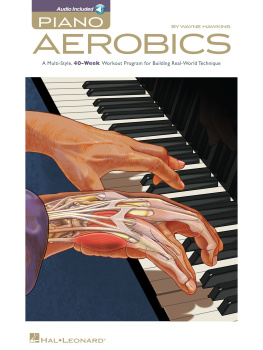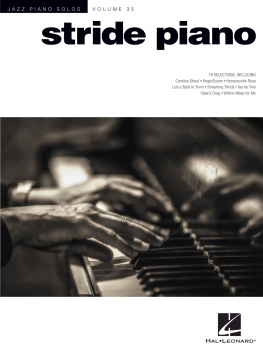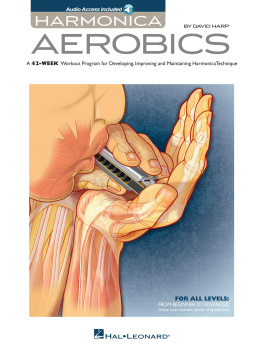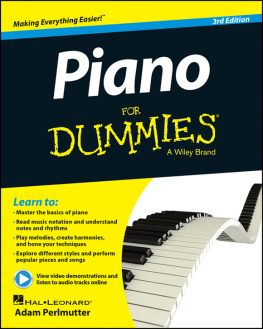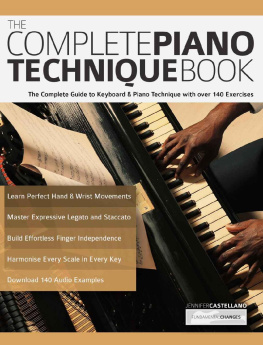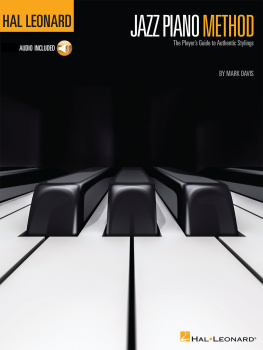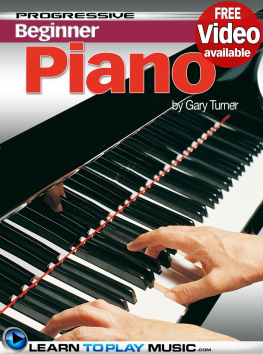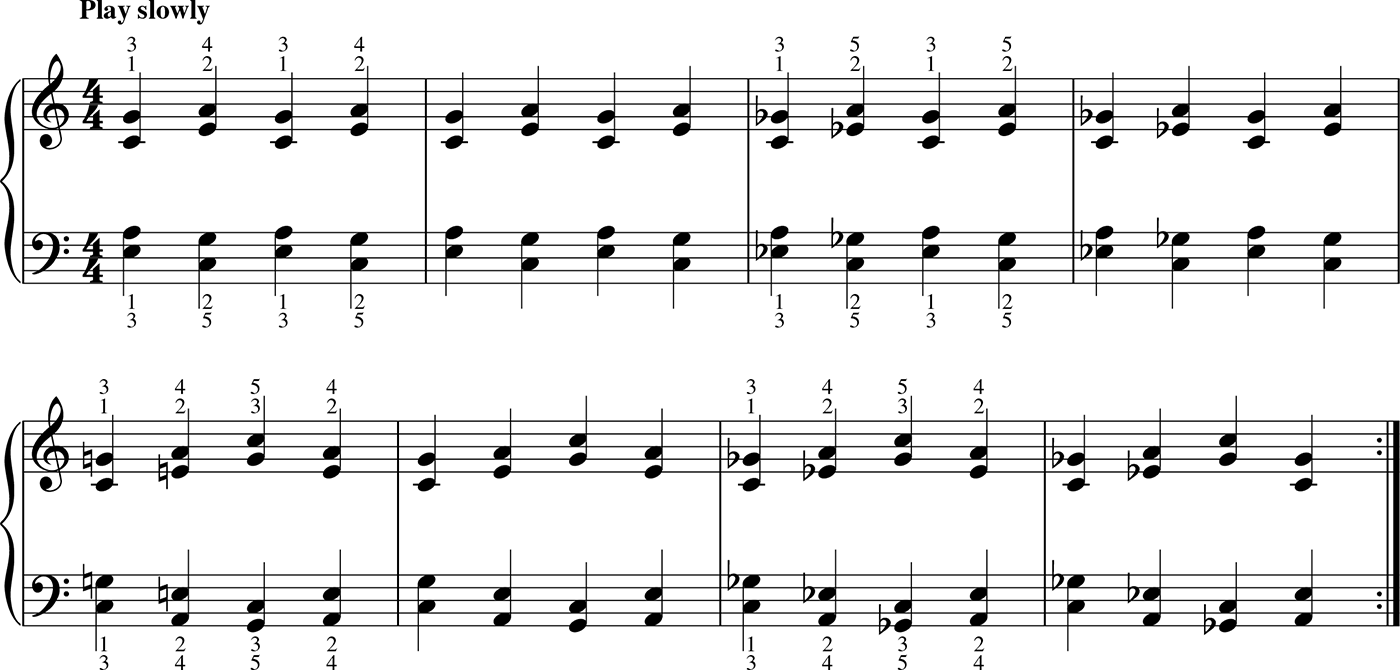I would like to thank all of the students and musicians who have influenced me; my editor Jennifer Linn; my wife Sylvia Stoner-Hawkins and daughter Halina; and my grandmother Verna Baska who made me practice.
Recording
All piano and keyboards by Wayne Hawkins.
Luiz Orsano, Drums and Percussion
Forest Stewart, Electric Bass
Sam Wiseman, Drums
Anfrisio Rocha, Electric Bass, Nylon String Guitar, Cavaquinho
Aaron Simcox, Tenor Sax, Flute
Doug Talley, Tenor Sax
Tim Brewer, Acoustic Bass
Keith Kavanaugh, Drums
All Tracks were recorded in May 2011 at Healing Studios in Kansas City, Kansas. Luiz Orsano was the recording, mixing and mastering engineer.
Notes from the Author
When I was asked to write Piano Aerobics, I immediately thought about what I could contribute to the wealth of material already published. I wanted to create a set of exercises that students would enjoy playing.
Often when students decide to play contemporary styles of music, they lack the chops for the job.
Most traditional piano training has resulted in good interpretation and understanding of classical repertoire only. Piano Aerobics is a set of exercises that introduces students to many popular styles of music including Jazz, Salsa, Swing, Rock, Blues, New age, Gospel, Stride and Bossa Nova. Not only will these exercises strengthen their chops, but they will also help them to play these styles with more musical flair. In addition, there are accompaniment tracks featuring professional musicians playing in those styles.
How to Use This Book
and Play-along Tracks
This book is generally organized from easiest to hardest workouts. Yes, it is an exercise book, but there are many forms of exercise. Please master each chapter before proceeding to the next one. When there are difficult passages, please slow down the tempo, play one hand at a time, and tap out rhythms before playing at the suggested tempo.
Many (not all) workouts have a corresponding play-along track. There will always be a two measure count-off before the first measure of the workout.
Introduction
Hand Position
In my teaching experience, I have found that hand position problems occur when one of two things happen. Either the hand is overly flat or the hand is overly arched (claw). In reality, a balanced, curved, and relaxed position will work best most of the time.
A True Story
Back when I was still in my twenties, I had the good fortune to meet professional baseball pitcher Tom Seaver when I was playing in a jazz club. I had an interest in pitching for baseball and he had an interest in jazz piano. I inquired about the technique in throwing a slider. He replied, Well, show me how to play [the piano] like that and Ill show you. I responded, Pretend you have a baseball in each hand. Turn your hands over and you will have good hand position [for playing the piano]. He then gave me a nice tip on how to throw that elusive pitch.
Here are some things to keep in mind regarding this technique:
- Turn both palms up.
- Put a baseball (or softball for larger hands)in each hand.
- Take care to not grip the baseball.
- Treat it more like an egg.
- Turn palms down and let baseballs drop.
- Place your hands over the piano keys.
Warm-Up and Stretching Exercises
Ways to warm up cold hands:
- Rub hands together.
- Shake hands and fingers.
- Use one hand to massage the other.
- Put palms together and expand all fingers in a comfortable stretch.
- Close fist, then open.
Stretching exercises: Start by planting the thumb and stretching the other fingers.
Now, stretch the left hand.
If your hand is larger you can try a larger interval. Here are some other stretches. Please follow the fingerings and take your time.
Weeks 1-2
KEEPING TIME
WHILE BUILDING STRENGTH
The Metronome: Make It Your Trusted Friend
- It is a great tool that can help smooth out technique.
- It trains the musician to keep a constant tempo.
- It is essential for modern styles of music, such as those found in this book.
To play with a metronome:
- Set your metronome to quarter note = 60.
- Turn on the metronome.
- Tap or clap the following figures matching the quarter note pulse.
Mastery of the metronome takes practice!
If you are having trouble playing in time, here are some possible suggestions:
- Clap or tap the rhythms.
- It is important to listen carefully and play exactly with the click. In general, if you are in sync, you will hear the click less.
- Relax. It will take awhile to internalize the click and listen.
Musicians refer to keeping good time as a groove. The term groove also refers to the spot where an old phonograph record needle sits while playing a record.
Finger Strengthening Exercise

